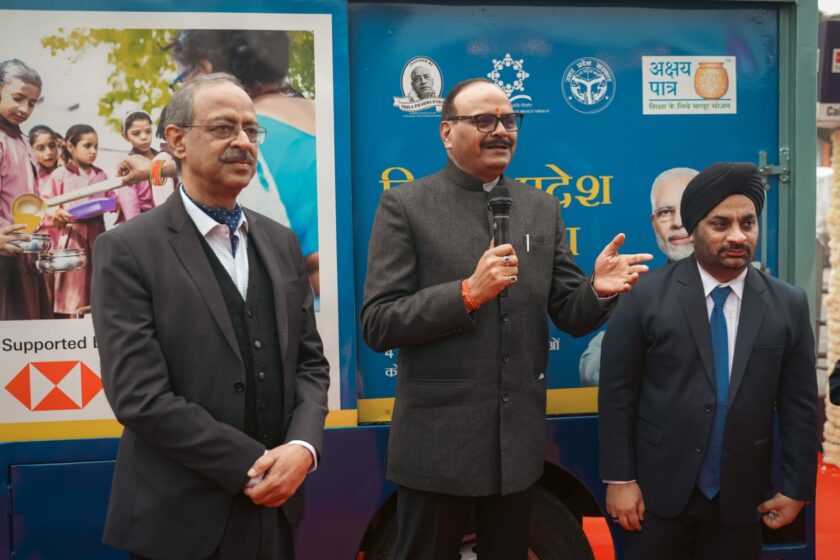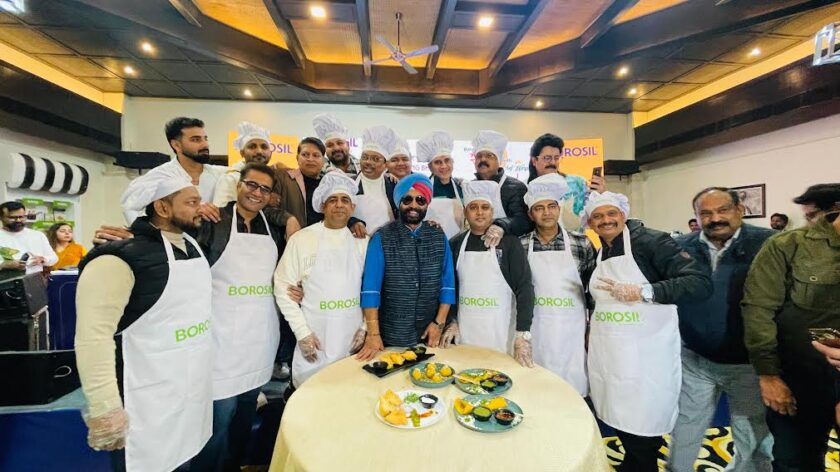Lucknow: In every Indian household, the kitchen has long been more than just a place to cook. It has been a sacred space — a pharmacy, a school, a laboratory, and a temple all in one. It is where grandmothers whispered healing recipes, mothers stirred love into lentils, and children unknowingly absorbed generations of wisdom just by watching, tasting, and helping. Today, as the world moves faster and our plates grow busier with processed, packaged, and ultra-modern foods, we stand at a critical juncture: Do we continue down the path of convenience, or do we reconnect with the forgotten treasures of our own food heritage?
For centuries, India has had an intricate, intimate relationship with food. Unlike many modern food cultures that emerged from industrialization, our food evolved in the lap of nature, guided by the rhythms of the seasons, the richness of soil, and the unique needs of the human body. It is no coincidence that our ancestors lived with fewer lifestyle-related diseases, despite not having access to multivitamins or gym memberships. Their medicine was food, and their food was medicine— a principle that has long been echoed in Ayurveda.
A Culinary Timeline,Food as a Reflection of Indian Life – India’s culinary journey is deeply interwoven with its social and agricultural fabric. In ancient texts like the Charaka Samhita, detailed guidelines were laid out regarding food combinations, timings, eating behavior, and the qualities of food. Ayurveda, which predates most modern medical systems, identified food as one of the pillars of life (Traya Upastambha) — along with sleep.
The idea of “Satvik”, “Rajasic,” and “Tamasic” foods goes beyond physical health — it connects with mental clarity, spiritual growth, and emotional balance. Grains, ghee, fresh vegetables, nuts, and dairy were considered “Satvik” — pure, light, and nourishing. It’s fascinating how deeply food was linked not only to the body but also to the soul.
During festivals and life rituals, food played a symbolic role — Pongal in Tamil Nadu to thank the harvest gods, kheer on birthdays for blessings, and saatvik meals during fasting periods to cleanse the body and mind. These traditions were not random; they were conscious tools for community bonding, digestion resets, and seasonal transitions.
How We Drifted Away – From Sacred to Synthetic – As globalization accelerated, urbanization and market forces reshaped the Indian kitchen. Packaged snacks replaced homemade namkeen. Cold drinks edged out buttermilk. Instant noodles became the new comfort food. Microwave meals promised ease, while traditional cooking was increasingly seen as time-consuming, outdated, or too laborious.
Technology and changing gender roles also contributed to the shift. As women began balancing both professional and household responsibilities, time for slow cooking and multi-step recipes diminished. Children, influenced by advertising, social media, and peer culture, began developing preferences for sugary cereals, cheese-loaded fast food, and aerated beverages.
In rural areas too, aggressive marketing by multinational food companies began replacing local staples with processed alternatives. Many rural children today recognize chips and biscuits more easily than ragi or sattu. The result? A surge in malnutrition, micronutrient deficiencies, and lifestyle disorders — in both affluent and low-income populations.
The Nutritional Goldmine We Forgot – Let’s pause to revisit what we had, and still have.
- Millets like ragi, jowar, bajra — once staples in every Indian home — are gluten-free, high in calcium, fiber-rich, and climate-resilient.
- Desi ghee, vilified for decades, is now being hailed globally for its healthy fats and butyric acid that aids gut health.
- Turmeric, with its active compound curcumin, is now a billion-dollar global wellness industry.
- Fermented foods — dosa batter, kanji, idli, handvo, pickles — are full of probiotics that support digestion and immunity.
- Ayurvedic spices like cumin, coriander, cinnamon, fennel, and asafoetida (hing) not only enhance flavour but regulate metabolism, hormonal balance, and respiratory health.
The Emotional and Social Nourishment of Indian Food – In Indian homes, food is rarely eaten alone. It is shared, offered to deities, tasted by family elders, and passed down through generations like heirlooms. Recipes are learned by hand, not by measurement. A pinch of this, a handful of that — with the most important ingredient always being love.

A simple khichdi is not just rice and dal — it is a comfort food during illness, a sattvic dish during fasting, and a quick, digestible meal after a long day. Roti made with freshly milled flour, slathered with ghee, served hot by a loving hand — this is the nourishment that transcends nutrition.
Traditional food has the power to anchor us emotionally. In a time where stress and anxiety are epidemic, our food rituals — when revived — can act as therapeutic anchors.
Reviving the Roots -A Way Forward – Reviving traditional food systems is not about rejecting modernity — it’s about intelligent integration. Here’s how we can bring about a practical, sustainable revival:
- Include local grains like millets in daily meals. Start with one dish a week — ragi dosa, bajra khichdi, jowar roti.
- Encourage schools to promote local food heritage. Organize millet lunches, traditional food fairs, and grandmother-led recipe days.
- Document family recipes. Let the oral wisdom of grandmothers be recorded and shared for future generations.
- Train health workers and nutritionists to incorporate traditional foods into counselling, especially in rural health and child nutrition programs.
- Cook at home more often. Even simple meals — dal, rice, sabzi — when prepared fresh and eaten mindfully, offer immense benefits.
- Support local farmers. Choose seasonal, organic, and regional produce over imported or out-of-season foods.
- Celebrate food with intention. Festive meals, fasting foods, community feasts — all can be brought back with modern relevance.
Returning to the Soul of Eating –Traditional Indian food is not a trend — it is a way of life. It is time we stop chasing health in foreign concepts while ignoring the deeply nutritional, cultural, and emotional wisdom sitting quietly in our own kitchens.
As a community nutritionist working with families, schools, and rural populations, I have witnessed how simple shifts — like replacing packaged snacks with roasted makhana or introducing seasonal vegetables into daily meals — can create long-term, sustainable change. When food comes from the heart, connects to the soil, and respects the body, it has the power to heal not just individuals but entire communities.
Let us honour our grandmothers, our soil, and our future — by bringing back the thali, one wholesome meal at a time.
Ranu Singh
Community Nutritionist
Founder – Nutrition Punch
National Executive Committee Member , IAPEN India
Chief Program Officer – Community Nutrition Core Group, IAPEN India
Secretary – IAPEN India, Lucknow Chapter
Disclaimer – This article is intended for educational and awareness purposes only. For specific health concerns or dietary needs, please consult a certified dietitian or medical professional before making major changes to your diet.





